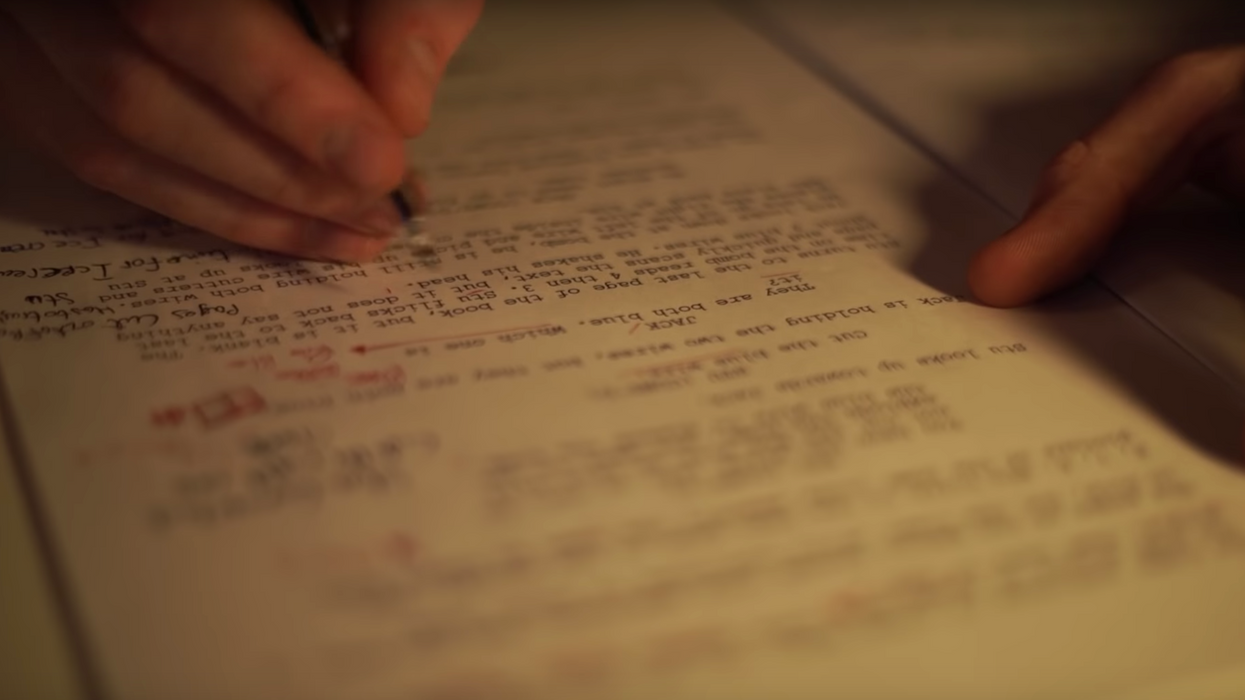No Dead Scenes: How to Create Much-Needed Conflict Between Characters
Characters just saying and doing things isn't enough to make a scene successful.

Okay, you're sitting there re-reading your script and you're beginning to realize something: it's boring. But why? Your characters are interesting enough, the things they're doing and saying are pretty entertaining—but everything just seems a little flat. You, my friend, might be missing conflict. If you're a little at a loss on how to create some, check out this video from the team over at The Film Look. In it, you'll not only learn how to inject conflict into your scenes but also how to check to see if that's what your scenes are missing.
Most screenwriters understand that a script should have an exterior and interior conflict that span across the entire story—the hero must save the world (exterior) but first, he must believe in himself (interior). However, conflicts should also appear in each and every scene in your screenplay. No, it doesn't have to be some big, hairy one like saving the world or overcoming a fear. It can be something as simple as a disagreement, a reluctance to do something, or a sharing of mutual disdain between two characters.
Creating conflict in your script
The example from the video depicts a scene in which two very different characters must diffuse a bomb. One character wants to work alone but can't complete the task if he does and the other wants to help but can't be trusted to do so. This is the conflict. Both characters stand in each other's way on their path to getting what they want. They both want to diffuse the bomb, so their paths are similar, but their approaches to the task are different, creating conflict.

Without conflict, all time bombs in movies would be diffused within a couple of seconds.
So, the conflict between the two characters, as well as the very on-the-nose ticking clock, creates tension and suspense to pull the audience in. Will they solve their problem? Will they figure out how to change so they can work together in fulfilling their want/need (diffusing the bomb). This is the other side of conflict, the resolution, and in order to get there, your characters must change and evolve from their main character flaw.
Have your characters address their character flaws
Most scenes won't have much if any resolution until you get nearer to the end of your screenplay, but when it does come time to tie up loose ends, your characters will have to address the character flaws that are the root cause of each conflict in every scene. Will they let their character flaw drive their decisions or will they embrace change?
Now, that doesn't mean that the conflicts in every scene are necessarily caused by a character flaw—at least in a direct way. The conflict in a scene could be something like a teenager wanting to go to a party but her parents won't let her. That conflict doesn't really have much to do with her character flaw, again, in a direct way, but it's one that she will either try to resolve (sneak out and go anyway) or concede to (angrily stomp up to her room and pout).
Jack and Stu from the example in the video eventually must find common ground and understanding in order to solve their problem and fulfill their want/need, but in order to do that a conflict must be there to solve. If there isn't one present, it would literally be two guys agreeing to work together. Without conflict, all time bombs in movies would be diffused within a couple of seconds. No tension. No suspense. No audience.

- There should be a conflict present in all the scenes of your movie: big or small, but never insignificant.
- The conflict should directly or indirectly clash with your character's desire to fulfill their needs/wants.
- Your character's flaws should hold them back from resolving each conflict...
- ...until they change...
- ...and are able to fulfill their needs/wants...
- ...unless they don't change...
- ...and end up like Tony Montana, Kane, or Daniel Plainview.
What's your approach to creating conflict in a scene? Let us know down in the comments.
Source: The Film Look










![Ethos, Pathos, Logos: 20 Effective Ways to Advertise [Infographic]](https://nofilmschool.com/media-library/ethos-pathos-logos-20-effective-ways-to-advertise-infographic.jpg?id=34064614&width=600&height=600&quality=90&coordinates=560%2C0%2C0%2C0)

